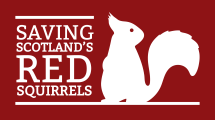…staggering 94% decline in native water vole populations? The American skunk-cabbage plant does actually smell as bad as a skunk…. White butterburr was imported as a garden ornamental from mainland Europe and SW Asia and escaped into the wild. What is an Invasive Species? There are around 2,000 non-native plants and animals in the UK, these non-native species… […]
Read More…
…squirrel species evolved over 35 million years ago, most likely in North America. Because of this, North America has more squirrel species than the rest of the world combined. Out of 28 Sciurus species (the genus which includes our red squirrel as well as the grey), 25 of them are native to North America. That’s 25 species in Canada and… […]
Read More…
…fantastic range of foods- everything a developing animal needs. So now we prepare to say goodbye to this little fellow. We shall take him to the SSPCA on Tuesday where he will be put into an indoor aviary and introduced to another squirrel of about his age, then he will be moved to a large outdoor aviary in a quiet… […]
Read More…
…I was able to initiate things very easily by making the Gatehouse Squirrel Group a project under a pre-existing local charity/company with an environmental slant (Gatehouse Development Initiative). I simply presented the GDI committee with a one-page constitution and that was that. This meant I had a Treasurer and a bank account from day one. ” There are two structures… […]
Read More…
…in the early 1990s, and I was riding my bike along the rutted, potholed track that serves as the main road through our family farm. Stopping for a drink of water I looked across the adjacent field when an unexpected movement caught my eye. Standing atop a nearby gatepost was a red squirrel. Tail twitching, eyes unblinking it stared at… […]
Read More…
…project’s spring surveys in both 2020 and 2021. These annual systematic surveys, which used baited squirrel-hair sampling boxes at over 200 specific locations, provided robust distribution data for both red and grey squirrels that was invaluable for comparing the fortunes of squirrels from year-to-year. Project Manager Dr Mel Tonkin said: “Without the spring survey data, we need the help of… […]
Read More…
…frequently in the colder weather. These are built high up in the tree canopy and made of twigs, moss, lichen and fur. Their intricate creation means they are incredibly well insulated, allowing red squirrels to rest, and be warm and protected from the freezing temperatures. If you are struggling to spot a red squirrel throughout winter, chances are they are… […]
Read More…
…like much, but locating and intercepting the very early grey squirrel colonisers is a difficult job – needles and haystacks being an apt analogy – and your reports enable us to narrow our search. Although the risk of grey squirrel presence in the area has been reduced, we of course do not know how many grey squirrels remain in Pitlochry,… […]
Read More…
…areas across Tayside, Angus & the Mearns, as well as measure the impact our work is having in the region. Other volunteers are supporting vital control work through our trap-loan scheme. Squirrelpox testing – Since 2012 we have carried out annual blood-sampling of grey squirrels across the Central Lowlands to test for squirrelpox antibodies, as part of a national squirrelpox… […]
Read More…
…Scotland for Saving Scotland’s Red Squirrels said: “Grey squirrels moving north from Angus into Aberdeenshire are a serious threat to local red squirrels, as well as the core Scottish population in the Highlands. The recent reports from the Mearns are worrying and we need help to stop the spread of grey squirrels in the area. “Grey squirrels threaten red squirrels… […]
Read More…
